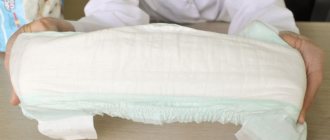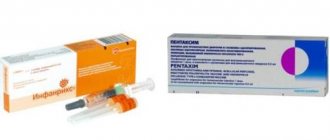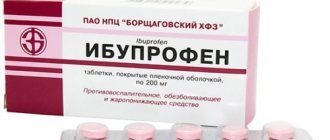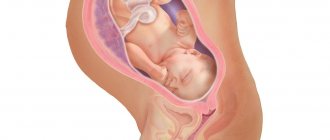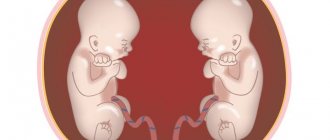Last update: 01/14/2020
Allergic reactions often cause various skin manifestations - rash, redness, irritation or swelling. Allergic dermatitis can often be difficult to distinguish from other skin conditions, such as infections or hives. Allergies are especially often confused with prickly heat, which occurs due to poor hygiene or temperature conditions.
What is the difference between prickly heat and allergies and how to determine which disease a child or an adult is suffering from? In order to answer this question, it is necessary to know the causes and symptoms of each disease and the characteristics of their course. In addition, the photos of heat rash and allergies presented on this page will help you.
Causes and symptoms of allergies
Many different factors can cause an allergic reaction - food, household chemicals, animal hair and pollen, fabrics, medications and even ultraviolet radiation. Sometimes even this knowledge is enough to distinguish allergies from prickly heat. If you've recently made changes to your usual diet, started taking new medications, or changed brands of laundry detergent, these factors are likely to be the cause of your breakouts. However, allergies can also arise unexpectedly - for example, if you have never previously noticed a negative reaction of the body to dog hair, and have only recently encountered this problem. In this case, special tests can help - they will not only help establish the presence of an atypical reaction to certain irritants, but will also help identify a specific allergen.
Usually, to get rid of the symptoms of prickly heat, it is enough to eliminate the factors that cause waterlogging and contamination of the skin - most often this is a lack of hygiene, poor ventilation of the skin due to clothing, or staying in hot and poorly ventilated rooms. In most cases, symptoms quickly disappear after this. An allergic rash is much more persistent: it is difficult to treat and does not always go away even after eliminating contact with the allergen.
What does a skin allergy look like?
Skin rashes due to allergies can manifest with different symptoms.
Typically, from the moment a child or adult comes into contact with an allergen until the first rash appears, it takes from one to three to five hours.
Typically, skin allergies to food or medications primarily affect the face and abdominal area and can then spread throughout the body.
Allergic rashes can manifest themselves with the following symptoms:
- The appearance of blisters, similar to the development of a nettle burn on the skin. Individual small blisters often merge into one large plaque, and severe itching is observed. Hives that affect the mucous membranes of the oral cavity are especially dangerous, as they provoke an attack of suffocation.
- The appearance of vesicles - small bubbles of liquid rising above the skin. Such rashes can be accompanied not only by itching, but also by painful sensations and a feeling of fullness.
- The appearance of rough, reddish spots, which, as the allergic reaction progresses, transform into weeping erosion. These itchy rashes most often appear on the face and hands.
- The formation of papules - homogeneous, compacted elements. With this type of rash, the itching intensifies in the evening, and increased dryness of the skin is often observed. The favorite locations for allergy papules are the neck, the inner side of the elbow transitioning to the forearm, the area under the knees and the perianal space.
Allergy rash
An allergy rash completely disappears only after the allergen leaves the body. This may take from one to several weeks.
POPULAR WITH READERS: Food allergies in children, symptoms, treatment methods
Causes and symptoms of prickly heat
Heat rash usually occurs when your skin becomes overheated and too wet, for example if you wear clothes that are too tight or are in a particularly hot and humid climate. Heat rash in newborns and infants often occurs when swaddling is too tight or low-quality diapers are used. This leads to one of the main differences between prickly heat and allergies - the limited localization of the rash. Typically, the symptoms of this disease appear locally - where clothing hides the skin, on the elbows or knees, in the area of skin or fat folds, under the hair. Allergy can affect both small areas of the skin and the entire surface of the body, since it is a systemic reaction of the body. In addition, the development of heat rash is often preceded by skin irritation - for example, friction from a tight collar or scarf.
The symptoms of the two diseases are very similar: the appearance of a small papular and/or vesicular rash. Most often, the affected skin turns red and swollen, becomes sensitive and irritated.
Causes of prickly heat in children and adults
The appearance of prickly heat on the skin is explained by an irritation reaction that occurs in response to excessive sweat production.
Most often, prickly heat develops in newborns and babies in the first year of life; this is due to insufficient functioning of the skin.
Miliaria in a newborn
A number of provoking factors contribute to the development of prickly heat in both children and adults:
- Wearing thick clothing made of synthetic materials. When choosing such clothes, heat exchange is disrupted, and the person quickly sweats.
- Obesity. Excess weight is one of the most important causes of skin irritation in adults. It has been noticed that well-fed babies suffer more from heat rash.
- Use of face and body creams with an oily structure. Such creams clog pores and interfere with normal heat transfer.
- Insufficient body hygiene. Babies in the first weeks of life always need to be washed daily and washed as often as possible - the accumulation of particles of feces and urine residues on delicate skin quickly leads to irritation. Miliaria also occurs in an adult if he neglects to take a regular shower. Daily hygiene procedures are especially necessary in hot weather.
Miliaria often bothers people with endocrine pathologies and diseases of the nervous system.
Periodically, irritation may appear after physical work in hot air or after illnesses accompanied by high fever and profuse sweating.
Treatment of diseases
Each of these diseases requires its own approach to treatment, but the basis of therapy is the elimination of factors that cause skin irritation. In the case of allergies, anti-inflammatory drugs (local, including hormonal) can be an effective remedy, as well as desensitization - a gradual decrease in sensitivity to the allergen. Miliaria usually does not require special treatment, unless it is caused by systemic disorders in the endocrine, nervous or cardiovascular systems.
In order to get rid of the most unpleasant symptoms of the disease, you should use special cosmetics, in particular La-Cri products. They do not contain substances that can cause an allergic reaction, and the main active ingredients in them are extracts of medicinal plants. La-Cri products are excellent for caring for irritated and painful skin in both adults and children.
Causes of allergies in children and adults
An allergic reaction to different types of irritants is a consequence of a specific reaction of the immune system to foreign proteins.
The disease often develops in people with a hereditary predisposition to allergies.
Factors provoking the disease include:
- Poor functioning of the immune system.
- Chronic diseases of the digestive system. Pancreatitis, cholecystitis, gastritis and other disorders in the functioning of the gastrointestinal tract cause dysbiosis, and this condition interferes with the normal absorption of all nutrients entering the body and increases intestinal slagging. The accumulation of toxins contributes to the development of an allergic reaction.
POPULAR WITH READERS: All about allergies to diapers in children
Allergies can be caused by food, medications, household chemicals, plants, cosmetics and many other irritants, including even some types of fabrics.
Skin symptoms of an allergic reaction most often accompany food intolerance and drug allergies.
Contact dermatitis may be limited to a certain area of the body upon external contact with an irritant.
Allergy skin rashes are often accompanied by other symptoms.
Consumer Reviews
Irina about La-Cri emulsion (wildberries.ru)
“I discovered this remedy six years ago. Very pleased. Can be used for both face and body! Gives skin nutrition. Not greasy. Light texture. It even helps when a mosquito bites you in the summer, this remedy relieves the itching and fever from the bite!”
Sources:
- Sukolin Gennady Ivanovich, Clinical dermatology. A short guide to the diagnosis and treatment of dermatoses, publishing house: Notabene, 2017
- Pankratov Valentin Gavrilovich, Pankratov Oleg Valentinovich, Infectious dermatology in the practice of primary care physicians, New Knowledge Publishing House, 2015
- Mancini A. J., Krouchuk D. P., Pediatric dermatology. Publisher: Practical Medicine, Directory, 2018
- Kildiyarova Rita Rafgatovna, Pediatrician for every day. Guide for doctors, publishing house GEOTAR-Media, 2021
Photos of heat rash
How to treat prickly heat
Treatment of prickly heat should begin with ensuring normal temperature conditions.
That is, the temperature in the apartment should not be too high, and clothing should be light and mainly made of simple, natural fabrics.
If you start treating prickly heat at its first signs, you can get by with simple measures:
- You need to bathe your baby every day. Miliaria goes away faster if you add a decoction of string, chamomile, calendula or a weak solution of potassium permanganate to the water.
- After water procedures, the body should be thoroughly dried and the areas where the rash appears should be treated with baby powder. It is necessary to apply the powder in a thin layer and only on dry skin, otherwise the problem may worsen.
- Air baths help to quickly remove the manifestations of prickly heat from the skin. It is advisable that the child spend at least 10 minutes naked twice a day.
Usually, these measures are enough to ensure that mild heat rash goes away completely.
But if the skin irritation is in an advanced stage and is manifested not only by rashes, but also by itching, burning and discomfort, then the use of external agents will be required.
Creams such as Bepanten, Sudocrem, Desitin help restore the normal structure of the skin.
Bepanthen cream
If there is a disturbance in general health, temperature, symptoms of intoxication and rash on the body, it is necessary to discuss treatment with a doctor as soon as possible.
It is not always possible to independently distinguish prickly heat from infectious diseases that require specific treatment.
Manifestation of prickly heat
The disease is characterized by the formation of small blisters on the body, which is why it is called crystalline prickly heat. This mainly happens in closed areas: back, buttocks, neck, many folds. In adults, it appears under the arms, in the groin and on the hands. This phenomenon is not characterized by itching.
Sometimes prickly heat can appear as reddish blisters filled with cloudy fluid. If treated incorrectly and constantly injured, they burst, causing pain and discomfort. In the future, if an infection occurs, suppuration may develop.
